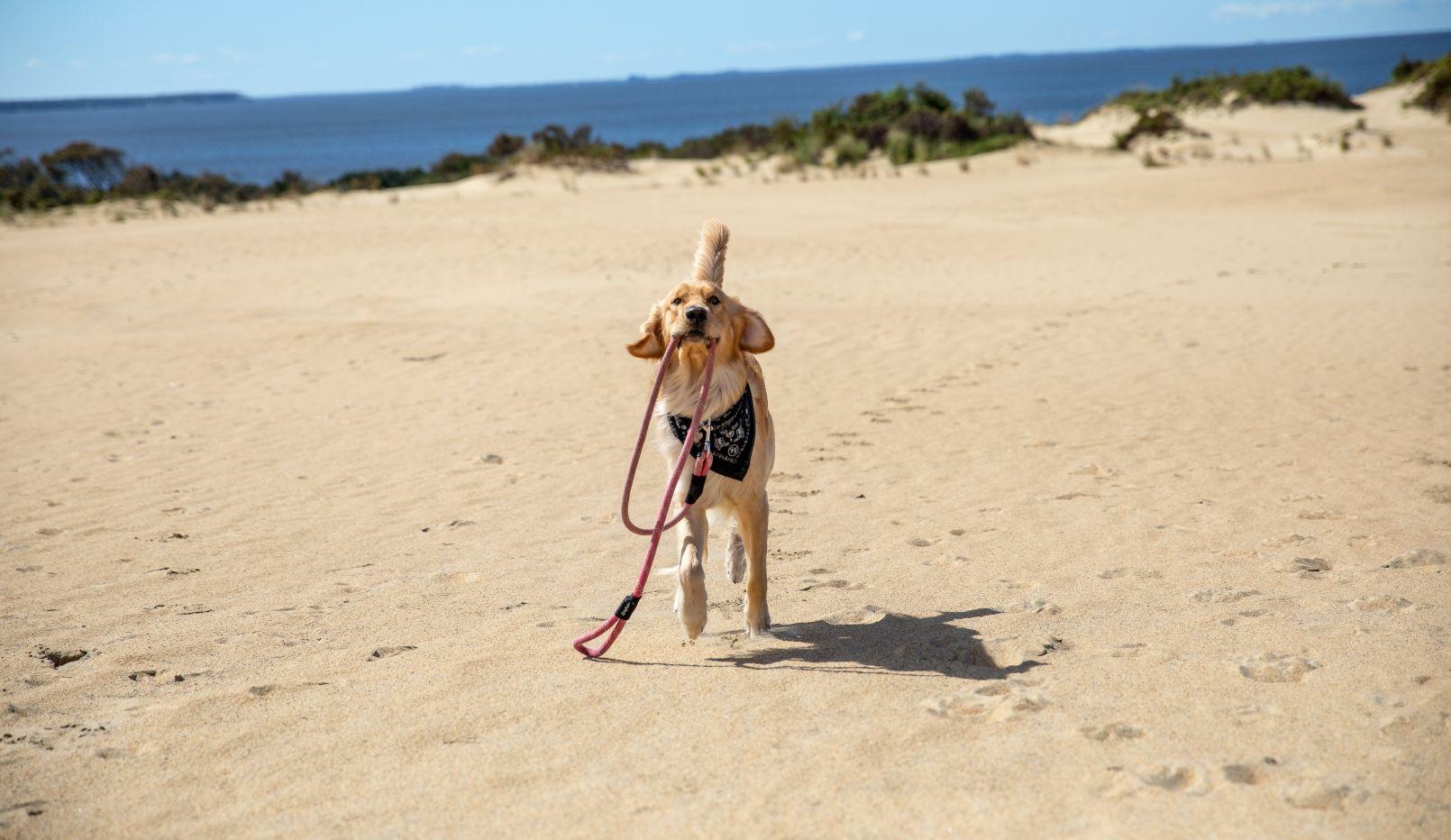
Considerations for your dog’s health this summer
5 minute read
How hot is too hot for a dog? Avoiding heat stroke
The warmer weather may well be welcome for us humans, but many dogs really struggle in the heat and it’s so important to understand just how your dog can be impacted by rising temperatures. Much of how they can cope with warmth depends on their age, coat type and any existing health conditions, but a general rule to follow is that below 19°C is safe for walking (though it can be lower for brachycephalic dogs such as pugs and Frenchies). As temperatures creep higher, though, you’ll need to walk in the shade and avoid strenuous activities such as running and games of fetch. Above 24°C sees a very high risk of heat stroke so avoid walking the dog in temperatures higher than this.
Dogs should never be left in cars in warm weather, even with windows open, as they can overheat incredibly fast, and don’t forget to check the pavement temperature – if it’s too hot for you to touch with bare feet, it’s certainly too hot for their paws.
If you’re going on holiday, ensure your dog always has access to fresh water for drinking and consider bringing a cooling jacket for those warmer days.

Do dogs get hay fever?
Dogs can suffer from summertime allergies just like humans do, though their symptoms often present in different ways. Rather than irritating their sinuses, pollen tends to affect a dog’s skin instead, so you might notice your pet itching more than usual during pollen season. Never medicate your dog at home for these symptoms: always consult your vet or a local vet on your holiday.
Grass seeds and dogs
Grass seeds can be a real pain for dogs – literally. These tiny green seeds have pointed, sharp ends, making them perfect for clinging onto a dog’s long fur and burrowing into the skin. In the worst cases, the seeds can move through the body to other areas, such as the lungs or eardrum. This can cause severe health problems for the dog and once inside the body, the seeds are very difficult to find. To avoid issues with grass seed altogether, simply avoid walking in areas with long, flowering grass that your dog might be tempted to leap through. If you’ve walked through seeding grass already, be sure to check your dog’s body from their paws and between their toes, and give any long-haired dogs a good brush, too.
Ticks on dogs and how to deal with them
Ticks can be prevalent throughout the UK and Ireland between April and October and they usually live within tall grasses, shrubbery and trees. While ticks can be harmless to dogs even if they latch on and bite, others can carry Lyme disease and this can be fatal. The best way to deal with ticks is a prevention method, such as regular medication like flea and tick tablets that deter or kill ticks (ask your vet for advice). Try to avoid walking in areas where there are likely to be ticks (particularly livestock fields where sheep graze), or at least keep your dog on a lead to stop them from brushing up against too much foliage.
Be sure to give your dog a thorough check for ticks after long walks in risky areas, and if you do spot any, use a twisting tool from a local pet shop or vets to remove it. Always dispose of the tick thoroughly, using strong alcohol to kill it or popping it down the toilet. If you are concerned the tick isn’t entirely removed, take your dog to the local vet.
Symptoms of Lyme disease don’t present in dogs for a couple of months after a tick bite and it can take as long as five months to see the issues arise. Keep an eye on their appetite, energy levels and mood over the coming months after a bite, and look out for lameness, swollen joints or lymph nodes.